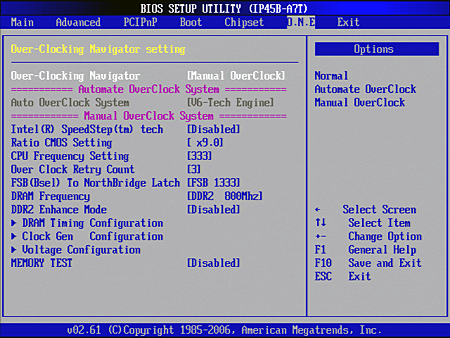11-Way P45 Motherboard Shootout
TP45 HP BIOS And Overclocking
| FSB Frequency | 100 to 800 MHz (1 MHz) |
| Clock Multiplier Adjustment | Yes |
| DRAM Ratios | 1.0, 1.2, 1.25, 1.5, 1.60, 1.67, 2.0 |
| PCIe Clock | 100 to 150 MHz (1 MHz) |
| CPU Vcore | Stock to +0.7875 Volts (0.0125 Volts) |
| CPU FSB Voltage | +0.00 - +0.350 - +0.750 (0.025, 0.05 Volts) |
| Northbridge (MCH) | +0.00 - +0.350 - +0.700 (0.025, 0.10 Volts) |
| Southbridge (ICH) | Not Adjustable |
| DRAM Voltage | Stock to +1.850 Volts (0.05 Volts) |
| CAS Latency Range | tCAS : 3-7 ; tRCD : 3-10 ; tRP : 3-10 ; tRAS : 9-24 |
Biostar provides the TP45 HP broad enough voltage and frequency controls to get the best performance out of most parts, and our overclock tests will show how stable these settings are.
The TP45 HP’s overclocking menu contains CPU clock speed and multiplier, boot strap, and DRAM ratio settings, with several sub-menus providing advanced options.
The DRAM timings sub-menu provides all the important controls, but using automatic (SPD) values is an “All or Nothing” situation as individual settings don’t have the automatic option. The TP45 HP couldn’t keep our Crucial Ballistix memory stable at DDR2-1066 CAS 5-5-5-15 (2.2 Volts), so we were forced to test it at a similar-performing DDR2-800 CAS 4-4-4-12.
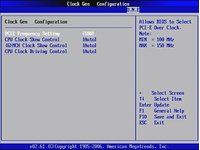
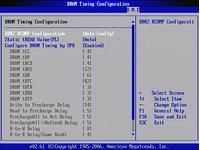
The Clock Gen sub-menu provides PCI Express frequency, skew control, and CPU clock drive strength control.
The TP45 HP’s Voltage submenu has all the needed settings for a stable overclock, except that the southbridge 1.1V line is tied to northbridge voltage.
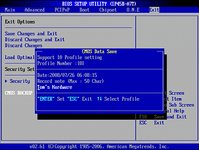
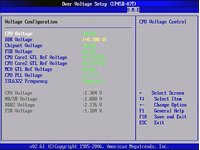
Like most other performance motherboard makers, Biostar can store custom BIOS settings in one of several profiles, handy for quickly returning to a previous set of timings, clocks and/or voltages.
Get Tom's Hardware's best news and in-depth reviews, straight to your inbox.
Current page: TP45 HP BIOS And Overclocking
Prev Page TP45 HP Onboard Devices Next Page TP45 HP Software And Accessories-
nickchalk Where are the lower price P45 M/B ?Reply
Asus P5Q pro is out for €110 and P5Q deluxe for €165 the price difference is about 70$ in Greece. -
Proximon I suppose I can get some good from having read this. Did you get paid by the word? Maybe next time you could just put together a complete features chart so that we can have some convenient comparison? You know, so someone could go to a chart and see at a glance which boards had eSATA or firewire, or 8 USB.Reply
-
JPForums I'd rather have the overabundance of information than a lack of information. Presentation could use a little refining (I.E. comparison charts and the likes), but having the relevant information available at least is a good thing.Reply -
the introduction and specifics are nice, the comparision isn't. so, why don't you test with an 8500 or qx9650? 6850 are outdated... and a mobo handling a c2d doesn't mean it can handle a quad too, see P5K for example (it stinks when it comes to a q6600).Reply
-
Crashman procithe introduction and specifics are nice, the comparision isn't. so, why don't you test with an 8500 or qx9650? 6850 are outdated... and a mobo handling a c2d doesn't mean it can handle a quad too, see P5K for example (it stinks when it comes to a q6600).Reply
Tom's Hardware wants the performance of current articles to reflect that of recent articles, so a "standard test platform" was chosen a while ago. It will get updated, but probably not before the new socket becomes widely available. -
zenmaster I would have liked to see something such as a P35 and an X48 as controls to help analyze the P45 Performance.Reply
In otherwords, What is the P45 Gaining me over the older P35.
What would I gain by going to the X48. (Or Lose) -
Crashman zenmasterI would have liked to see something such as a P35 and an X48 as controls to help analyze the P45 Performance.In otherwords, What is the P45 Gaining me over the older P35.What would I gain by going to the X48. (Or Lose)http://www.tomshardware.com/reviews/intel-p45-chipset,1961.htmlReply -
johnbilicki The first 17 pages were filled with nothing but junk from ASUS. Do us a favor: don't even bother featuring or *MENTIONING* anything for any reason from a company that refuses to RMA 200-400 dollar brand new motherboards with anything other then used and usually broken junk. It destroyed my enthusiasm for the article.Reply -
dobby nickchalkWhere are the lower price P45 M/B ?Asus P5Q pro is out for €110 and P5Q deluxe for €165 the price difference is about 70$ in Greece.Reply
the p5q PRo is a p43 board, i should know i have one
